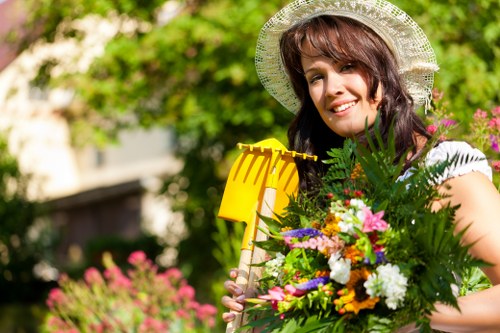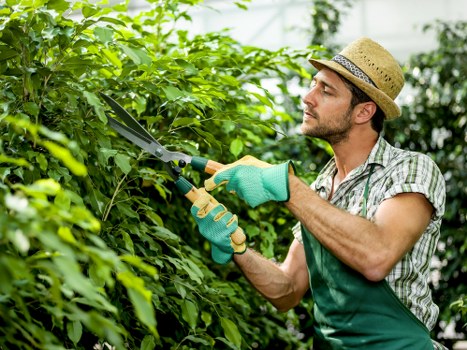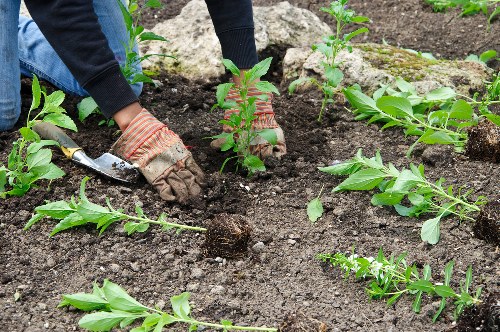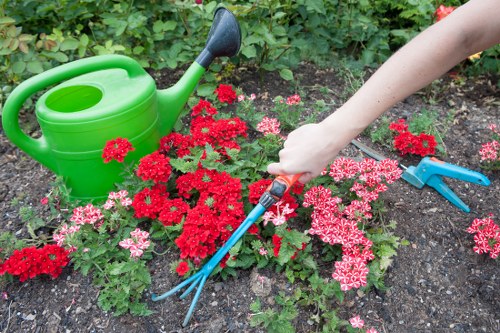Hedge Trimming in Staines
Introduction to Hedge Trimming

Maintaining healthy and aesthetically pleasing hedges is essential for any garden or property in Staines. Proper hedge trimming not only enhances the beauty of your outdoor spaces but also promotes the growth and longevity of your plants.
In Staines, the climate and local flora present unique challenges and opportunities for hedge enthusiasts. Understanding the best practices for hedge trimming can make a significant difference in the health and appearance of your hedges.
Whether you’re a seasoned gardener or a homeowner looking to improve your garden, this guide on hedge trimming in Staines will provide you with valuable insights and tips.
Why Hedge Trimming is Important

Regular hedge trimming plays a crucial role in maintaining the structure and health of your hedges. Here are some key reasons why hedge trimming is important:
- Promotes Healthy Growth: Trimming encourages new growth and ensures that the hedge remains dense and vibrant.
- Enhances Aesthetics: Well-maintained hedges enhance the overall appearance of your garden and property.
- Prevents Overgrowth: Regular trimming prevents hedges from becoming unruly and overgrown, making them easier to manage.
- Increases Longevity: Proper maintenance extends the lifespan of your hedges, reducing the need for costly replacements.
In Staines, with its specific climate conditions, understanding the importance of hedge trimming can help you achieve the best results.
Maintaining your hedges not only adds beauty but also provides privacy and acts as a barrier against pests and wind.
When to Trim Your Hedges

The timing of hedge trimming is crucial to ensure the best growth and health of your plants. In Staines, the optimal times for trimming hedges are:
- Early Spring: Before new growth begins, typically in March or April.
- Late Summer: After the main growth period, usually around August or September.
- Periodic Maintenance: Light trimming can be done throughout the growing season to maintain shape.
Trimming during these times ensures that your hedges recover quickly and continue to grow vigorously throughout the year.
Avoid trimming in late autumn or winter when plants are dormant, as this can weaken them and make them more susceptible to diseases.
Understanding the growth cycle of your specific hedge variety is also essential for determining the best trimming schedule.
Best Practices for Hedge Trimming

To achieve the best results, follow these hedge trimming best practices:
- Use the Right Tools: Invest in quality hedge trimmers that are sharp and well-maintained.
- Trim Regularly: Regular maintenance prevents the need for heavy trimming and keeps hedges healthy.
- Maintain Evenness: Trim evenly to ensure a uniform shape and appearance.
- Avoid Cutting Too Much: Remove no more than one-third of the hedge’s volume at a time to prevent stress.
- Clean Up Debris: Remove trimmings and debris to prevent disease and pests.
Implementing these practices will help you maintain beautiful and healthy hedges throughout the year.
Additionally, consider the specific needs of your hedge variety, as different plants may require different trimming techniques.
Choosing the Right Tools for Hedge Trimming

Having the appropriate tools is essential for effective hedge trimming. Here are some tools you might need:
- Manual Hedge Shears: Ideal for small hedges and precise trimming.
- Electric Hedge Trimmers: Suitable for medium-sized hedges and easy to use.
- Gas-Powered Trimmers: Best for large or thick hedges, providing the power needed for heavy-duty trimming.
- Loppers: Useful for cutting thicker branches that electric trimmers can't handle.
- Pruning Saws: Necessary for very thick or stubborn branches.
Choosing the right tool depends on the size, type, and density of your hedges. In Staines, ensure that your tools are suitable for the local climate and plant varieties.
Regular maintenance of your trimming tools, such as cleaning and sharpening, will extend their lifespan and improve their performance.
Professional Hedge Trimming Services in Staines

If you prefer to leave hedge trimming to the professionals, Staines offers a range of expert services. Professional hedge trimmers have the experience and tools needed to deliver exceptional results.
Benefits of hiring a professional include:
- Expertise: Professionals understand the specific needs of different hedge types and how to care for them.
- Time-Saving: Hiring a service saves you the time and effort required for trimming.
- Safety: Professionals are trained to handle tools safely, reducing the risk of accidents.
- Consistent Results: Ensures your hedges are trimmed uniformly and beautifully.
When choosing a hedge trimming service in Staines, consider their reputation, experience, and customer reviews to ensure you receive high-quality service.
Don’t hesitate to request quotes and compare different providers to find the best fit for your needs and budget.
DIY Hedge Trimming Tips

If you decide to trim your hedges yourself, here are some DIY tips to help you achieve professional-looking results:
- Plan Your Trim: Decide on the shape and size you want your hedges to be before you start.
- Start with the Top: Trim the top of the hedge first, then move to the sides for a balanced look.
- Use Proper Techniques: Make smooth, even cuts to avoid damaging the plant.
- Take Breaks: Regular breaks prevent fatigue and reduce the risk of mistakes.
- Clean Your Tools: Clean and disinfect your tools before and after use to maintain their condition.
Implementing these tips can make your DIY hedge trimming experience more efficient and satisfying.
Remember to prioritize safety by wearing protective gear, such as gloves and safety glasses, during the trimming process.
Common Mistakes to Avoid

Even with the best intentions, it's easy to make mistakes when trimming hedges. Avoid the following common errors to ensure your hedges remain healthy and attractive:
- Over-Trimming: Cutting too much at once can stress the plant and hinder its growth.
- Poor Timing: Trimming at the wrong time of year can negatively impact the hedge's health.
- Using Dull Tools: Dull tools can cause uneven cuts and damage the plant.
- Ignoring Plant Health: Trimming sick or damaged branches without addressing underlying issues can worsen the plant’s condition.
- Neglecting Cleanup: Leaving trimmings can attract pests and lead to disease.
Being mindful of these mistakes can help you maintain the health and aesthetics of your hedges effectively.
Always assess your hedges before trimming to identify any potential issues that need to be addressed.
Choosing the Right Hedge Variety for Staines

Selecting the appropriate hedge variety is key to achieving a beautiful and manageable garden in Staines. Some popular hedge options include:
- Boxwood: Known for its dense, evergreen foliage and versatility in shaping.
- Privet: Fast-growing with a classic green appearance, ideal for forming hedges.
- Laurel: Robust and hardy, with glossy leaves that provide excellent coverage.
- Holly: Offers striking berries and spiky leaves, adding visual interest.
- Yew: Slow-growing but resilient, perfect for formal hedges.
Each variety has its own maintenance requirements and aesthetic appeal. Consider factors such as growth rate, climate adaptability, and desired appearance when choosing your hedge.
In Staines, consult with local nurseries or gardening experts to select the best hedge types suited to your specific conditions.
Eco-Friendly Hedge Trimming Practices

Incorporating eco-friendly practices into your hedge trimming routine benefits both your garden and the environment. Here are some sustainable tips:
- Use Electric Tools: Opt for electric or battery-powered trimmers to reduce carbon emissions.
- Recycle Green Waste: Compost your trimmings or use them as mulch instead of sending them to landfill.
- Choose Native Plants: Native hedge varieties typically require less maintenance and are more resilient.
- Water Wisely: Ensure your hedges receive adequate water without wasting resources.
- Natural Fertilizers: Use organic fertilizers to promote healthy growth without harmful chemicals.
Adopting these eco-friendly practices ensures that your hedge trimming activities contribute positively to the environment.
Moreover, sustainable gardening fosters biodiversity and supports local ecosystems in Staines.
Maintaining Hedge Health Throughout the Year
[IMG_11]Maintaining the health of your hedges requires attention and care throughout the year. Here are some seasonal tips:
- Spring: Begin trimming as new growth starts. Apply organic fertilizers to support growth.
- Summer: Regularly water your hedges and perform light trimming to maintain shape.
- Autumn: Remove any dead or diseased branches and prepare your hedges for the winter.
- Winter: Protect your hedges from frost by mulching and avoid heavy trimming.
Consistent care during each season ensures that your hedges remain healthy and vibrant all year round.
Monitor your hedges regularly for signs of pests or diseases and address issues promptly to prevent further damage.
Benefits of Well-Trained Hedges
[IMG_12]Well-trained hedges offer numerous benefits, enhancing both the functionality and beauty of your outdoor spaces:
- Privacy: Dense hedges provide a natural barrier, offering privacy from neighbors and passersby.
- Noise Reduction: Thick hedges can help dampen surrounding noise, creating a more peaceful environment.
- Wind Protection: Hedges can act as windbreaks, protecting your garden and property.
- Wildlife Habitat: Well-maintained hedges provide shelter and food for various wildlife species.
- Property Value: Beautiful hedges enhance curb appeal and can increase your property's value.
Investing time and effort into training your hedges pays off in the long run through these added benefits.
Additionally, well-maintained hedges contribute to the overall sustainability of your garden by supporting local biodiversity.
Advanced Hedge Trimming Techniques
[IMG_13]For those looking to take their hedge trimming to the next level, here are some advanced techniques:
- Pinching: Removing the tips of new growth to encourage bushier growth.
- Heading Back: Cutting back branches to shape the hedge and control its size.
- Thinning: Removing some branches entirely to improve light penetration and air circulation.
- Topiary: Shaping hedges into artistic forms and figures for a unique garden feature.
- Layering: Creating multiple layers within a hedge for added depth and interest.
Mastering these techniques can help you achieve professional-quality hedges that stand out in your Staines garden.
Patience and practice are key when implementing advanced trimming methods to ensure the health and beauty of your hedges.
Conclusion
[IMG_14]Effective hedge trimming is a vital aspect of garden maintenance in Staines. By understanding the best practices, choosing the right tools, and maintaining your hedges throughout the year, you can enjoy beautiful and healthy hedges that enhance your property.
Whether you opt for professional services or prefer to do it yourself, the benefits of well-trimmed hedges are undeniable. From promoting growth to increasing property value, hedge trimming is an investment in the beauty and functionality of your garden.
Contact us today to learn more about our hedge trimming services in Staines or to book a consultation with our gardening experts.
